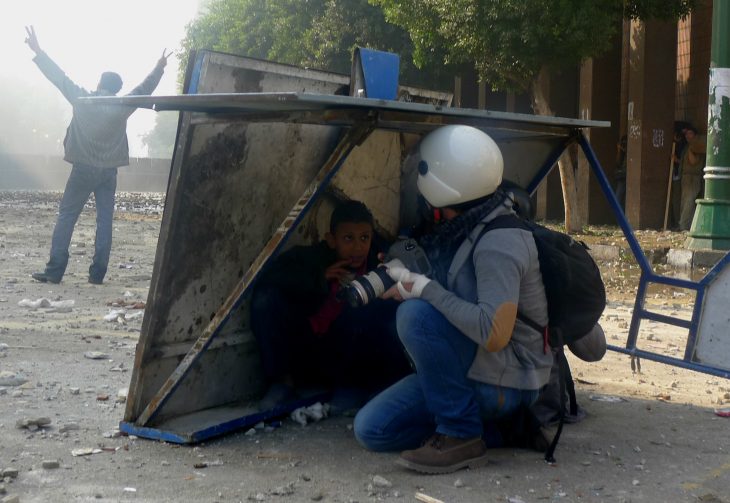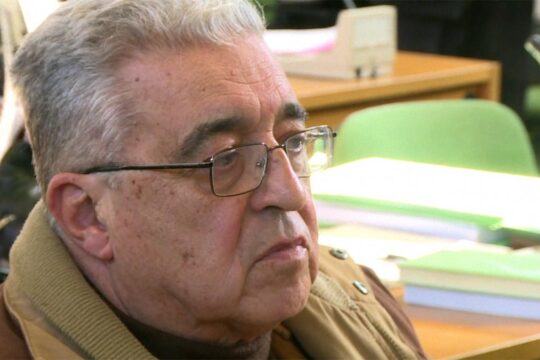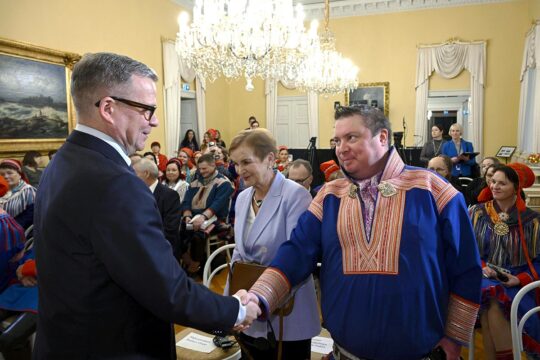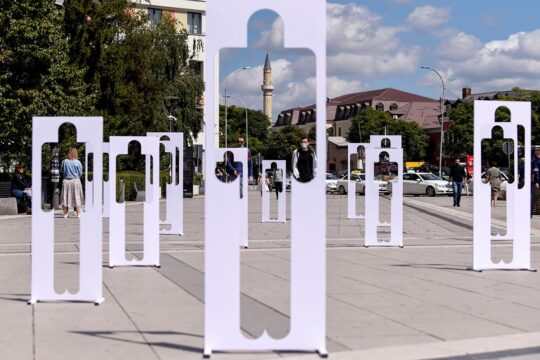The execution of James Foley by ISIS militants last year received international headlines and highlighted the risks run by journalists, especially freelancers, reporting from war zones. It also questioned the adequacy of protection of journalists under international humanitarian law (IHL) as well as the news media’s own policy practices for dealing with employees operating in high-risk conflict zones. A strong and clear legal framework that protects journalists under the rules of war has in practice failed to prevent attacks, protect media personnel or hold to account those responsible for breaches. Meanwhile, the media industry has been able to respond at best in an ad hoc manner, and standard practice within the industry or among advocacy and support groups for training, responding and advocating does not exist.
This problem is not new. Journalists have been covering conflicts since the dawn of the modern press era and have always been vulnerable. The recent trends and brutal cases however illustrate a growing threat to media personnel that includes killings and hostage taking by militant groups. As journalist and playwright George Packer wrote recently in the New Yorker, “In some places, it’s impossible to report the truth without making oneself an object of hatred and a target of violence for one sector of society or another.” The nature of conflict is changing at the same time that the news media is being economically disrupted, leading to, in many cases, the improvised nature of journalism’s response and the shifting of burdens from organizations to individuals. Both James Foley and Steven Sotloff were working as freelancers with little institutional support when they were abducted and murdered.
Are journalists humanitarian actors?
The question of the nexus between information and humanitarian action is complex. We’ve seen first-hand how local journalists can have a material impact on a conflict or humanitarian crisis. The news they report contributes to the protection of people who are not part of hostilities in a conflict by providing vital, life saving and practical information. Foreign correspondents and freelancers reporting from crisis zones, some of which are out of the international spotlight, can serve to mobilize political responses and humanitarian aid. The International Criminal Tribunal for the former Yugoslavia (ICTY), for instance, has recognized that journalists reporting in the former Yugoslavia played a vital role in bringing attention to the horrors and realities of the conflict.
Local journalists and the media they work for provide an important platform for dialogue, linking affected communities and victims to international courts, and providing a means for victims to recount what they have endured, and to share their perceptions and expectation about international justice. They are also setting standards for objectivity and professionalism, transforming abstract norms of rights and international law into real life situations for the listener or audience. Where the rule of law is fragile or non-existent we’ve seen how journalism can compensate for the shortcomings of the State. In Central African Republic and elsewhere, staff from International Medical Corps (IMC) and Human Rights Watch (HRW) have at times provided the only source of information from regions cut off from the capitol, while Hirondelle’s reporters at Radio Ndeke Luka in Bangui play an increasing role in bearing witness to victims in the absence of functioning police and judiciary.
The current state of protection for press under international humanitarian law
Under IHL, journalists and media workers are considered civilians in the context of an armed conflict, and therefore protected from attack and from being taken prisoner, unless and for such time as they directly participate in hostilities. Media, as well as television and radio antenna towers, are protected from attack unless they make an “effective contribution to military action.” This is true even if these media are shaping public opinion through propaganda.[1] The obligation of states and conflict parties to respect and protect includes a duty to investigate serious violations of the laws of war when they occur.
In addition to the protection afforded journalists as civilians, “embedded” journalists, or war correspondents, also receive prisoner-of-war (POW) protections if they are captured. This POW treatment includes access to medical care, the right to have contact with their families, the right to receive relief from ICRC or similar organizations, and the right to fundamental judicial guarantees. The provisions of IHL are less extensive with regard to non-international armed conflict than international armed conflict, and do not expressly mention journalists, though journalists would still benefit from civilian protection in a non-international armed conflict.
The need to better protect journalists is hard to deny, though there’s considerable divergence on the best way to do so. Over the past decade, there has been a growing movement for the ratification of a new specific treaty for the protection of journalists, including provision for a “PRESS” emblem. The Draft International Covenant for the Protection of Journalists was formulated in 2006 with this objective in mind. The draft covenant notably recognizes the vital role of journalists in armed conflict and underlines the core principle that freedom of the press is essential to ensure the right of the public to information in all circumstances. If ratified, it would provide for considerably broader applicable scope than IHL, namely including violence such as riots and demonstrations, or actions carried out by criminal networks outside of armed conflict.
However, the creation of a distinctive “PRESS” emblem for journalists also raises considerable concerns, not just for journalists who would be visibly easier to target, but for their sources as well. Potentially open to abuse, the scheme raises unanswered questions around accreditation and the status of citizen journalism.
Furthermore, in spite of the deterioration of de facto protections for the press in the field, there is little, if any, clamor among news executives or reporters for strengthening statutory protection in conflict. In fact, in a recent poll of global media professionals conducted by the International News Safety Institute (INSI), there is not a single mention of the protection of journalists under IHL. In other words, for journalists on the front lines, and the editors that decide to send them there, the gap between standards and implementation is so wide as to render IHL seemingly beyond consideration.
Is additional legal protection for journalists reporting conflict the answer?
In the past 10 years, 370 journalists were murdered; the perpetrators enjoy total impunity in 90% of all cases. According to Christof Heyns, Special Rapporteur on Extrajudicial, Summary or Arbitrary Executions, the problem lies not with gaps in the international legal framework, but with respect for the law. When police and courts neglect their duty to investigate and prosecute cases, a culture of impunity prevails and limited deterrence exists against future violence.
While the problem of violence against journalists has not been a high priority for international diplomacy, a number of advocacy organizations are working to raise awareness of the issue. The Committee to Protect Journalists, for example, plays a critical role in publicizing attacks on the media and in pushing for concrete steps to hold member states accountable to ensure impartial and effective prosecution of cases of violence against journalists. Press Uncuffed, an initiative recently launched by Washington Post reporter Dana Priest, is raising awareness of the problem for new, younger audiences and calling for the release of journalists held for covering stories in the public interest.
Often overlooked is the protection for the function of media in conflict and post-conflict settings. According to the UN High Commissioner for Human Rights Zeid Ra’ad Al Hussein, “Strong and independent journalism is vital to human rights promotion and protection.” Furthermore, journalists that are well versed in IHL can help to inform the local population and state and non-state actors of their rights and obligations, as well as to advocate for their own protection, especially in situations where battle lines are blurred.
What lessons can be drawn for the protection of humanitarian workers?
At its best, journalism embodies the core humanitarian principles of humanity, impartiality and independence, and good, compassionate and professional reporting in times of crisis can relieve human suffering. Yet the central duty of a journalist is to tell the truth, and sometimes this means doing things humanitarians cannot do such as travelling with insurgent groups, or slipping across a border. Accountability reporting and investigative journalism are intrinsically uncooperative with authority.
The press hates regulation for a reason: it is almost always double-edged and too often used to suppress information. New rules for the protection of journalists could all too easily restrain the media’s ability to gather information confidentially, to protect its sources and to move and operate freely; similarly, new security measures for humanitarian actors could lead to restrictions in mobility, or access to vulnerable populations and communities.
While recognizing the distinct natures of journalism and humanitarian action, the increasing convergence in the risks they face operating in insecure environment raises many of the same concerns. Perhaps the most important thing that we can do is to provide resources – adequate compensation, insurance, and training – to those closest to the events to report as fairly, accurately and safely as possible, or to provide humanitarian relief as effectively as possible. As noted in a recent ATHA paper, aid workers – as with journalists – need the requisite resources, training, and protection to enable them to carry out critical relief efforts in insecure settings. This includes much more attention to the unique vulnerabilities and risks faced by different humanitarian actors based on their nationality, gender, affiliation, or other characteristics, and the implications of such disparities for protection.
What’s needed in most cases is not new “fortified” protection, but better enforcement and accountability on the one hand, and improved coordination and operational protocols for media and humanitarian actors on the other. There is also a need for much more engagement with states, who are ultimately responsible to uphold their obligation to prevent, to protect, and to investigate, try and criminally punish those responsible for attacks on the media and humanitarians.
We can learn from the inadequate response to the attacks on journalists that however strong the outcry, real change is likely to come from a combination of political pressure at the international level, backed by strong industry advocacy, and practical changes to the way humanitarian and media organizations operate. This means being able to coordinate and share information in real time so as to keep their staff safe from attack for simply doing their jobs.
Operating in many of the same complex environments, journalists and humanitarian aid workers have had to cope with similar trends of increasingly insecurity and protection gaps. While each field serves a distinct purpose, and operates under a distinct professional code, journalists and aid workers share a number of key principles and functions in conflict zones that have exposed them each to attack. Efforts to enhance the protection of these professionals will have a direct impact on their ability to protect lives, alleviate suffering and contribute to sustained peace.
[1] This point was underlined in the final report of the ICTY, with a distinction made between inciting crimes, as in Rwanda, and disseminating propaganda. The four Israeli attacks on journalists and media facilities in Gaza in 2012 was widely condemned as a violation of the laws of war; Israeli officials sought to justify what they called “legitimate military targets”, suggesting that it was permissible to attack these media because of their opinions and associations with Palestinian armed groups.
A special thanks to Sacha Meuter, Legal Advisor, Fondation Hirondelle.
This post originally appeared on ATHA.se






